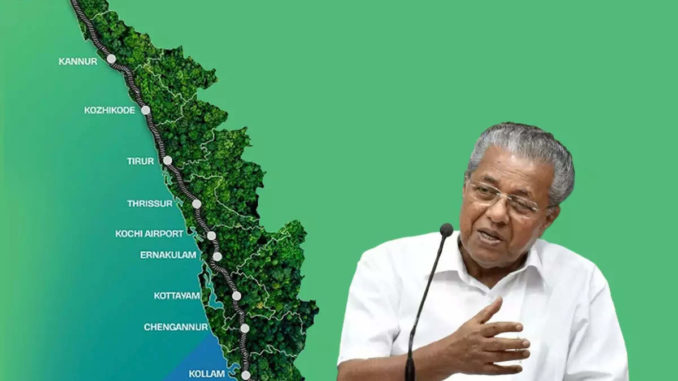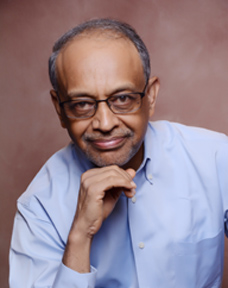

If you are an NRI visitor like me who often takes a trip to Kerala, there will always be some surprises in store for you. Despite all that the doomsayers say, Kerala is on an upward trajectory, building infrastructure and modernizing every facet of people’s lives. Although mostly two-lanes, the roads have never been better, at least in the Central Travancore area where I belong. Commercial and Residential buildings are rising on both sides of the highways or significant roadways, and heavy traffic is on most of the main arteries. Main Central Road (M.C. Road) passes through my small town called Kallissery, which used to be a sleepy little village where I grew up and now transformed into a shopping paradise with appliance stores and a Reliance supermarket. Traveling just one Kilometer away from the Center of the town is the newly built ‘K.M. Cherian Hospital’ with some of the most modern facilities anywhere in the world. The nonstop flow of the vehicles and the constant sirens of Ambulances heading toward the hospitals might make one yearns for those good old days of peaceful and serene times. Traveling from Chengannur to Changanassery on the M.C. Road, it almost appears as one long contiguous town (a mini megapolis) with shops and multi-cuisine eateries on both sides. Yes, Kerala has progressed, and transformative changes come with its rewards and infliction.
On the political front, it has always been noisy. Both sides are impatient to listen to each other, and it is almost as if one is shouting over the other just to offset each other. These days, the most heated topic is the K-RAIL, a Semi–High-Speed Rail development project that the current LDF government is vigorously promoting under Chief Minister Pinarayi Vijayan. I cannot argue against this Silver Line project that could reduce travel time and pollute less. Moreover, high-speed transportation systems are an integral part of development anywhere, whether highways or Rail. The Shanghai Maglev in China is the world’s first high-speed commercial magnetic levitation (“maglev”) line, whose trains run on the non-conventional track and reach a top speed of 430 KM/h (267 mph). In 2020, China started testing a maglev prototype train that ran 600 km/h and planned a 2025 launch date.
If we go back in history, the semi-High-Speed train project was the brainchild of the Oommen Chandy government and is now carried on by the current administration. As we all know, Trivandrum, the Capital of the State, is located at the far end of an elongated State where travel by road could often take almost half a day to reach from one end to the other. After decades of efforts in developing M.C. Road, it is a two-lane road, and an express highway remains a distant dream. Some would also argue that it may be a boon for tourism and open faster access to Kovalam and Vayanad on a single vacation trip. Commuting between the Capital and the commercial hub (Cochin) may become further effortless. Considering the project’s scope, as many experts demand, an environmental impact study may shed light on the flood impact on low-lying areas during the monsoon season. However, development and environmental protection are not mutually exclusive if we are to create jobs and prevent scores of our young people from exiting the State after their studies. What is the point of having a beautiful state while people have little or no means to survive?
The real problem is how the current government has addressed this very important project. A level of arrogance and missteps has marred the positive aspects of this rail project. We should not undertake an ambitious project of this magnitude without transparency to all stakeholders. The government has failed miserably in making its constituents understand either the necessity or vitality of this giant undertaking. Average folks in Kerala have an inherent suspicion of any project due to a history of corruption and misdeeds. On top of that, there is a failure to deliver on past promises; whether it is OKHI cyclone or big flood of 2018, some of the victims are still waiting for rehabilitation. How then, all those who would be dispossessed due to this new venture trust the Government or any empowered Institution to compensate them in a timely fashion? It is a credibility issue that couldn’t resolve overnight. As a matter of fact, a government must work hard to create trust among its people, making it easier for any project proposal to succeed in a timely fashion. However, the challenge of maintaining trust is complicated by a faster and more diversified flow of information, such as through the Internet and social networks.
It is a sorry state of affairs as well when some of the Members of Parliament from Kerala appeal to the BJP government not to fund this project. For the UDF, it is not a shining moment in its history! The BJP government at the Center hasn’t been very forthcoming to the growing financial needs of Kerala in general, and now they have been provided a support base from none other than the grand old party itself! If anyone from the party rank and files disagrees, they would become the object of scorn and threatened with disciplinary action! A healthy and open debate is an integral part of the democratic process. This issue should have been sorted out at the State level rather than setting up a bad precedent of one party appealing for funds and another demanding a denial of the same to the Center.
There are also vibrant discussions on the project’s financial viability and whether the K-RAIL would be solvent. However, if you look around the world, public transportation systems are not self-sustaining, and government subsidies and other financial assistance are integral to daily operations. Amtrak in the USA and MTA in New York City are prime examples of transport systems that rely heavily on government handouts to provide affordable commuting or long-distance services to their citizens.
Another valid issue that has been raised by the opposition leader V.D. Satheesan is whether we are buying some outdated technology from Japan that may be eager to recoup some money for their discarded products. If we are to embark on a project of this magnitude, we must seek state-of-the-art technology and look forward well into the future. Kerala’s mindset typically drives towards only thinking about the short-term, and we ought to alter that to think about tomorrow. Nevertheless, the Congress party must be conscious to avoid attaching itself to an anti-development tag going into the next election. It was the Communist Party that stood against automation, and the people of Kerala have paid a heavy price for it over the years. Their intransigence barred multi-national companies from setting up commercial hubs in the State. The K-Rail issue should not become a distraction as well from monitoring other governance issues that are critical to the well-being of the people of the State.
From my point of view, this project is doomed unless the LDF government brings the opposition to the table for dialogue while convincing the community at large and assuring the directly affected residents of fair and timely compensation. In a democracy, dialogue and building consensus are imperative, and steps need to be taken for transparency and confidence-building measures. Knocking down the kitchen doors with the help of the Police and bureaucrats to lay the survey stones would not help the cause. The current government appears to be inebriated with power, and they might pay a high price for the overreach unless there is a course correction. CPM hasn’t learned a lesson from Nandigram in West Bengal, and K-RAIL could be their undoing in Kerala!
(Writer is a former Chief Technology Officer of the United Nations and the Vice-Chairman of the Indian Overseas Congress, USA. He can be reached at gta777@gmail.com)




Be the first to comment